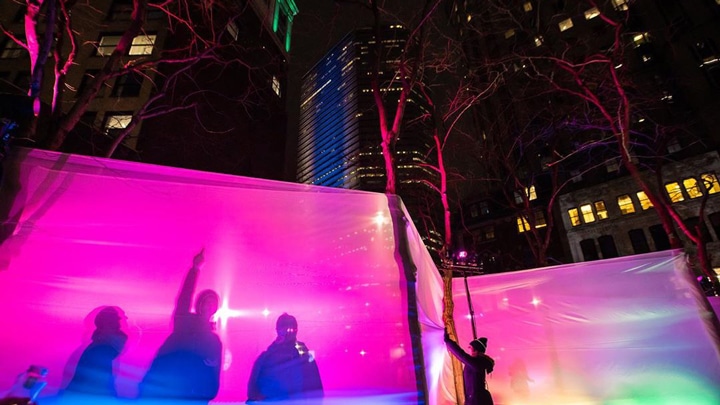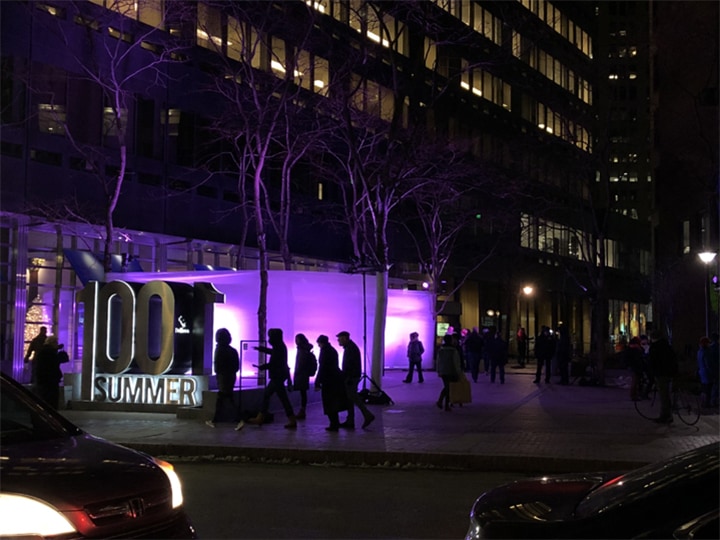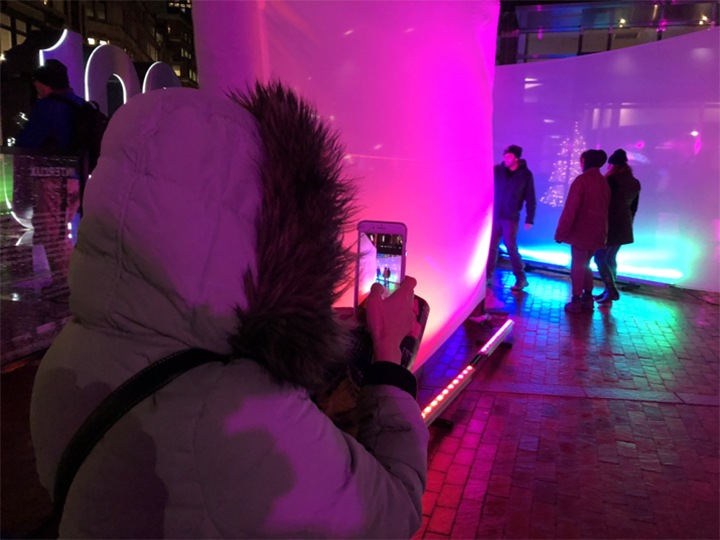
© Aram Boghosian
Interact Light play is a new phone app by Signify that is designed to connect to architectural lighting installations and transform them into interactive experiences by allowing visitors to take control of and “play” with lighting. A recent example of this was at ILLUMINUS Boston, where Light play was used on Alex Furlan’s "Interlux," to create an interactive experience for visitors.
The app, available for both iPhones and Android phones, shows visitors a map with sites that are available to interact with. Visitors can then select a desired installation and a time to control the lighting. When their time slot becomes available, they can choose colors or preprogrammed dynamic shows to run on the site. Visitors can also share their experience with the world via social media, all through the app. Further, the site administrator is always in full control of their site and can configure the app from a web-based dashboard. The configuration parameters include time and days of the way for availability of the app, the amount of time per interaction, and the allowable content. Light play uses Interact Landmark’s cloud-based scene management APIs to connect to the lighting control system.

Interlux art installation at 100 Summer St, Boston
One of the immersive experiences was Alex Furlan’s "Interlux," an interactive light installation that was controllable by the public using Interact Light play. Alex specializes in theatrical lighting design and lighting animations in response to sound. His Interlux project was installed in the plaza at 100 Summer Street and consisted of layers of a soft translucent fabric stretched in a zig-zag pattern between tree trunks. The fabric was grazed with dynamic color-changing light using a Color Kinetics’ ColorGraze MX4 Powercore RGBW lighting system and the treetops were also lit to create a canopy of light over the plaza with ColorBurst Powercore gen2, RGBW. As the fabric moved in response to the wind or people touching the surface the light reflections on the fabric changed, more people were encouraged to touch the fabric. Alex also created several dynamic layered lighting effects that were programmed into the architectural lighting control system. Through the Light play app, visitors could also interact with the lighting by selecting one of these shows. Alex commented: “Interact Light play is very simple to use, and it puts people in control of the lighting. Anyone can download the app, and play.”
Allowing visitors to control the lighting using the Light play app added another dimension of interactivity to Interlux. By taking control the lighting effects, people could make their contribution to the art installation and directly interact with it. We observed people of all ages using the app to turn the lighting to the colors and effects they wanted. They conversed, learned from each other, and took many selfies. In total, over two days, 860 people downloaded the app and they triggered more than 4000 color or scene changes.
Our research indicates that city officials, foundations, and building owners want to use interactivity to create unique and engaging experiences for people, while the people using the app primarily want it to be fun, memorable, and easy to use.

Visitors experiencing and enjoying the lighting installation
Color Kinetics has been lighting up landmarks for more than 20 years. Now, Interact Light play can transform these into interactive experiences and make the site a must-see destination by allowing visitors to interact with the architectural lighting, create lasting memories, and share their experience with the world via social media.
These interactive possibilities are just the beginning. Stay tuned as there is a lot more to come.

November 14, 2023
How lighting technology can help reduce risks to migrating birds